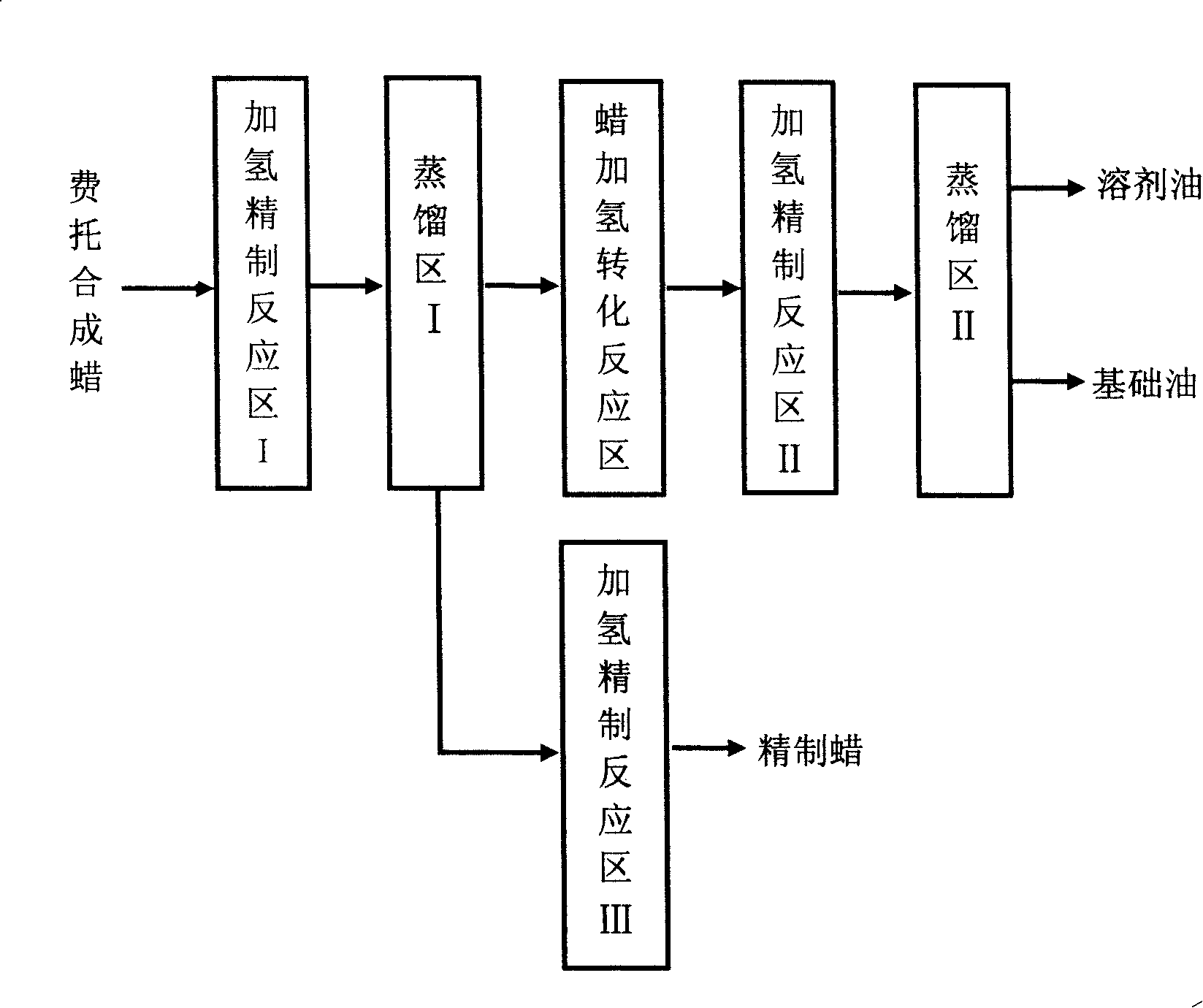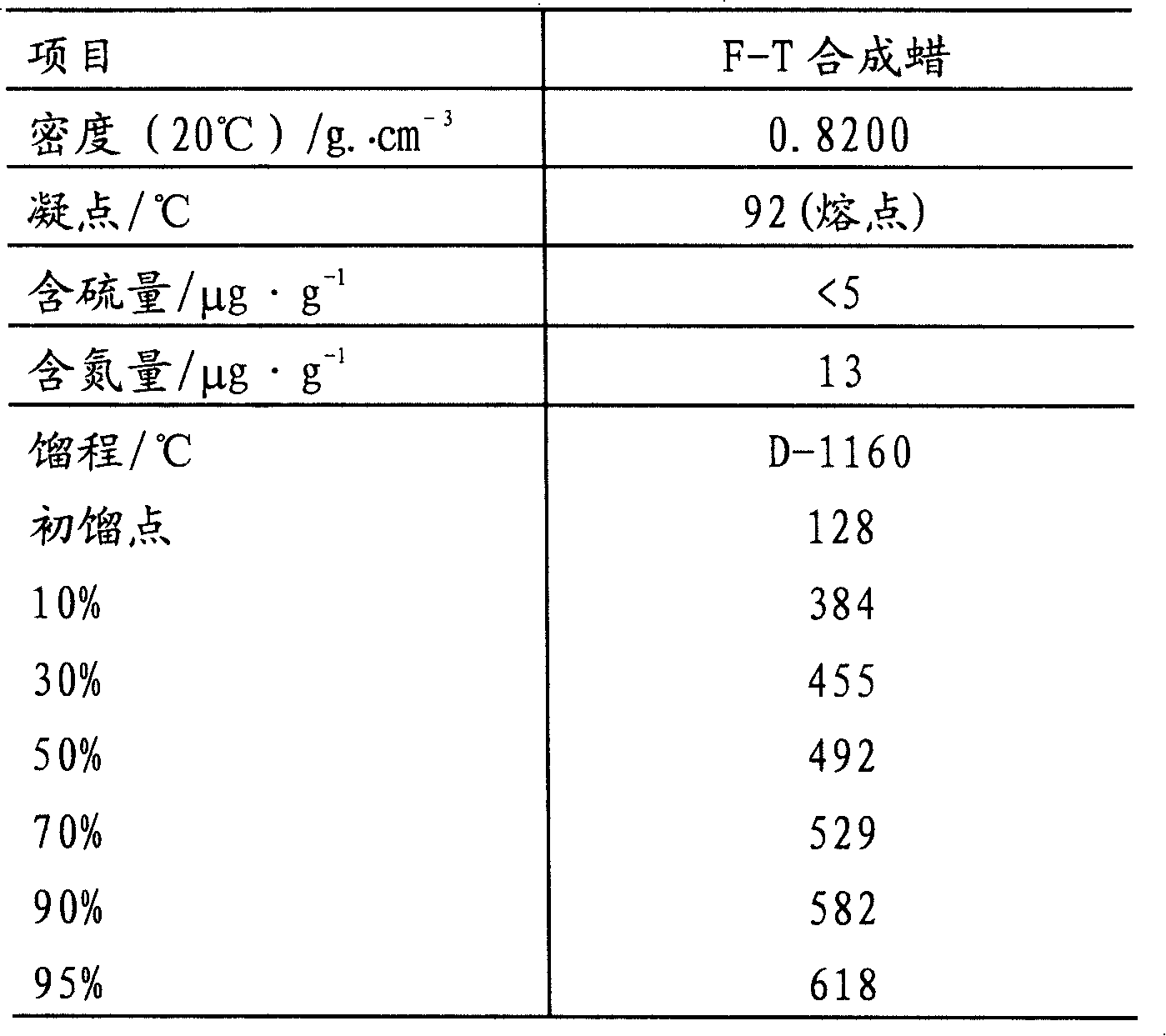Production of solvent oil, lubricant base oil and heavy wax by fischer-tropsch synthetic wax
A technology for lubricating oil base oil and Fischer-Tropsch synthetic wax, which is applied in the petroleum industry, processing hydrocarbon oil, hydrotreating process, etc., can solve the problems of not being able to obtain high-quality wax at the same time, and making little contribution to the yield of lubricating oil base oil, etc. Achieve the effect of reducing excessive light weight and increasing added value
- Summary
- Abstract
- Description
- Claims
- Application Information
AI Technical Summary
Problems solved by technology
Method used
Image
Examples
Embodiment 1
[0036] This example uses a kind of Fischer-Tropsch synthetic wax as raw material, and its properties are shown in Table 1.
[0037] according to figure 1 The technological process processes the raw material. The catalysts are: catalyst a in hydrotreating zone I, catalyst b in wax hydroconversion zone, catalyst c in hydrotreating zone II, catalyst c in hydrotreating zone III, and the operating conditions are shown in Table 2, wherein, in Distillation zone I distills and separates the wax after hydrorefining to obtain two materials of fraction less than 500°C (yield is 46% by weight) and fraction equal to or greater than 500°C (yield is 54% by weight). The refined wax hydroconversion oil is distilled and separated to obtain solvent oil and lubricating oil base oil that meet the standards of No. 120 and No. 200. The properties of the wax product are shown in Table 3, the material balance of the wax hydroconversion reaction is shown in Table 4, the properties of the lubricating ...
Embodiment 2
[0062] The fraction below 500°C obtained in Example 1 is fed into the isomerization pour point depressant, and the hydrogen partial pressure is 6.0MPa, the reaction temperature (wax hydroconversion reaction zone / hydrorefining reaction zone II) is 360 / 210°C, and the volume space velocity (wax Hydroconversion reaction zone / hydrorefining reaction zone II) 0.5 / 1.0h -1 , under the condition of hydrogen-oil ratio of 600:1, the obtained hydrogenated product is fractionated to produce base oil and solvent oil products, the material balance of the wax hydrogenation conversion reaction is shown in Table 11, the properties of the lubricating oil base oil are shown in Table 12, and the properties of the solvent oil are shown in Table 11. Table 13.
[0063] Table 11
[0064] Hydrogen consumption, %
[0065] Table 12
[0066] Product nature
[0067] Table 13
[0068] project
[0069] It can be seen from Example 2 that when the fraction below 500 °C is fed i...
PUM
| Property | Measurement | Unit |
|---|---|---|
| Viscosity index | aaaaa | aaaaa |
| Viscosity index | aaaaa | aaaaa |
Abstract
Description
Claims
Application Information
 Login to View More
Login to View More - R&D
- Intellectual Property
- Life Sciences
- Materials
- Tech Scout
- Unparalleled Data Quality
- Higher Quality Content
- 60% Fewer Hallucinations
Browse by: Latest US Patents, China's latest patents, Technical Efficacy Thesaurus, Application Domain, Technology Topic, Popular Technical Reports.
© 2025 PatSnap. All rights reserved.Legal|Privacy policy|Modern Slavery Act Transparency Statement|Sitemap|About US| Contact US: help@patsnap.com



